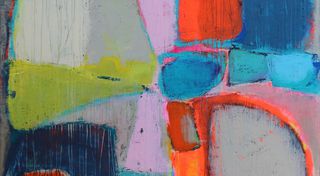

Biography
Joseph Csaky (1888–1971) was a Franco-Hungarian avant-garde sculptor, regarded as one of the first artists to apply Cubist principles to sculpture, establishing himself as a central figure in 20th-century modern sculpture.
Born in Szeged, Hungary, Csaky began his studies at the School of Applied Arts in Budapest in 1904 but soon left due to dissatisfaction with its academic approach. He later worked at the Zsolnay porcelain factory in Pécs, acquiring skills in ceramics and modeling. In 1908, he moved to Paris and joined the artistic community of La Ruche, where he met artists like Alexander Archipenko and Gustave Miklos.
From 1910, he exhibited at the Salon de la Société Nationale des Beaux-Arts, later participating in the Salon d'Automne and Salon des Indépendants, where he presented boldly Cubist sculptures. In 1912, he took part in the historic Section d'Or exhibition alongside Picasso, Braque, Gleizes, and Metzinger.
After serving in the French army during World War I, Csaky resumed his artistic career in 1919, supported by art dealer Léonce Rosenberg, who gave him an exclusive contract with the Galerie de l'Effort Moderne. His work from this period, such as Clothed Figure (1913) and Cubist Head (1914), reflect influences from African sculpture and display a clear geometric reduction.
Granted French citizenship in 1922, Csaky shifted in the 1920s toward more figurative forms, while retaining the Cubist-inspired simplification. His key works include L'Envol (1926) and Crouching Woman (1922). In 1930, he co-founded the Union des Artistes Modernes (UAM) with artists like Jean Prouvé and Charlotte Perriand, promoting integration between art and design.
Major exhibitions include the Salon des Beaux-Arts (1910–11), Salon d'Automne (1911–12), Section d'Or (1912), and posthumous retrospectives at the Musée Bourdelle (1977), the Troyes Museum of Modern Art (1986), and Galerie Marcilhac (2007).
His works are part of prestigious collections such as the Centre Pompidou, the Museum of Modern Art of Paris, the Guggenheim Museum (New York), and the Kröller-Müller Museum (Netherlands). Csaky died in Paris in 1971, leaving a profound legacy in the evolution of modern sculpture.
Nationality




